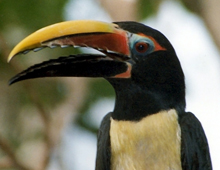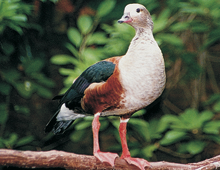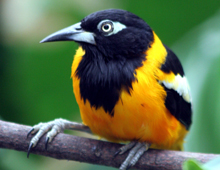
Depending on the light, males may appear black, bright red, pink, or purple. Research conducted at Yale University's Peabody Museum of Natural History, with the assistance of the DWA, has…
Read More

Before the 1990s, this small Southern South American relative of the roadrunner was rare in captivity. In the last 15 years, many have been bred in US zoos. Zoo-bred specimens,…
Read More

This strange bird, with its bald head and huge dark eyes, is also known as the Calf bird, because of its remarkably loud deep call. Like the Cock-of-the-rock, it is…
Read More

Every year since 2007, this remarkable bird has reproduced at the DWA. Through May 2011, 40 had hatched here, with 26 surviving to independence. Prior to this time, the total…
Read More

Before the 1980s, this small toucan from Northeastern South America was very rare in captivity. Since the first captive breeding took place in 1980, in a California private aviary, hundreds…
Read More

This elegant bird is unique among toucans for having a cap of tightly curled feathers that appear "permed". While not a rare bird in its range (south of the Amazon,…
Read More

This brightly-colored South American relative of the Canvasback, Redhead, and Scaups is another widely kept zoo duck that thrives in captivity. In contrast to the purplish-black and gray-pinstriped male, the…
Read More

This magnificent bird was first bred in captivity, in Europe, more than 160 years ago, and his been highly prized in zoos and important private collections ever since. Found in…
Read More

Not closely related to North American geese, this is an inhabitant of jungle rivers. Though it occupies a large range in northern South America, it is classified as Near Threatened.…
Read More



